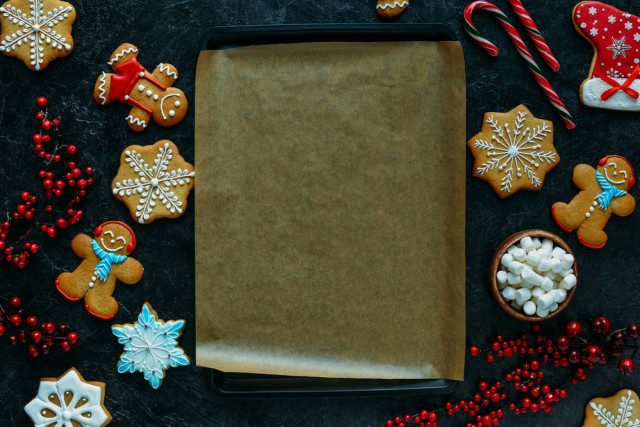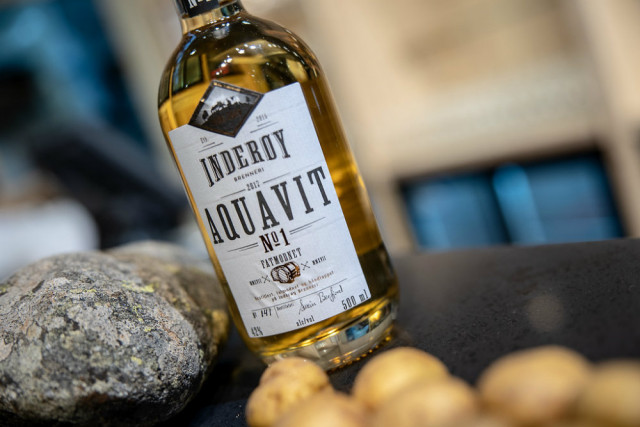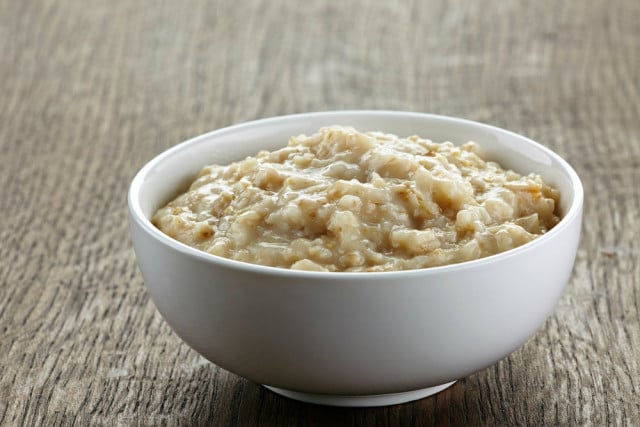How to celebrate Christmas like a Norwegian

Norway’s Christmas traditions can seem peculiar if you aren't used to them. Follow these nine steps to do it right. 1. Wake up and smell the Christmas stocking
On the morning of December 24th, the big Christmas day in Norway, most Norwegian children get a sock filled with edible goodies that they devour in front of the telly before breakfast. As you may know Norwegians tend to be relatively obsessed with healthy breakfasts (sugary toppings are frowned upon), so for a kid, getting to stuff your face full of chocolate as soon as you wake up renders the the 24th even more magical.

Photo: Depositphotos
2. Watch a poorly dubbed Czech film
While you eat your chocolate, remember to switch on national broadcaster NRK in time to watch the ultimate Christmas movie, Tre nøtter til Askepott (‘Three nuts for Cinderella’). Believe it or not, watching a Czech film about Cinderella is one of the most important Norwegian Christmas traditions there is. Every year since 1996, families have cuddled up on the couch to watch Cinderella dressing up in the outfits she finds in her magical nuts.
While the norm in Norway is to subtitle foreign films, Tre nøtter til Askepott is dubbed. Not only is it dubbed, one single man does all the voices - from the high-pitched stepmom’s ‘Askepooooooott’ (‘Cinderellaaaaa’) to the deep-set voice of the King. It all sounds quite absurd, but Knut Risan, the man behind the voices, may be the most famous voice of Christmas in Norway.
READ ALSO: How does the remake of Tre Nøtter til Askepott compare to the original?
3. Choose your Christmas meal: pinnekjøtt or ribbe
There are two main Norwegian traditional Christmas dinners. Pinnekjøtt (‘stick meat’) is a dish where salted meat, mostly sheep, is dried and salted, then served with boiled potatoes and mashed turnip. Traditionally, pinnekjøtt was the most popular dish for those living on the Norwegian west coast, but the lines have become blurred and most people eat it sometime during the Christmas holidays.
The second option, ribbestek (rib steak) is the number one Norwegian Christmas dinner classic. It’s a huge pork steak covered with crispy crackling. It’s heavy, drizzling with fat, and often served with stewed red cabbage, Brussels sprouts and potatoes
4. Did you chose ribbe? If so you should have started making it hours ago!
As any self-respecting Norwegian Christmas chef knows, making the ribbe is an art. The key is getting a sprø svor, a crispy crackling. Really, the crackling needs to be perfectly crunchy, otherwise you might just throw the whole thing in the bin.
Norwegians have struggled with the ribbe-crackling for decades. It’s caused sweat, tears and multiple spousal arguments. For years there was even a special emergency helpline set up,ribbetelefonen, to help despairing ribbe chefs all over the country.
READ MORE: The traditional Norwegian Christmas delicacies you should know about
5. Listen to the Silver Boys
At 5pm sharp, Sølvguttene (‘the Silver Boys’) hold their annual concert to announce that it’s now officially Christmas. Sølvguttene mark the separation between preparing and actually enjoying Christmas Eve. For children, it’s a huge relief because it means most of the unbearable waiting for Santa and gifts is nearly over. For parents, it’s even more of a relief because it means there’s no use in fretting over the sprø svor anymore.
6. Drink the aquavit. Really, drink it.
Whether you had ribbe, pinnekjøtt or other Christmas treats for dinner, Norwegians usually top the meal off with a glass of akevitt, “aquavit”, as a digestive. Akevitt is a strong liquor based on potato, “the grape of the north.” You need around 10 kilograms of potatoes to make three bottles of akevitt, and the annual akevitt production consumes around 20,000 tonnes.

Photo: Trøndersk Matfestival
7. Open the gifts
After dinner, it’s time to open the presents. In Norway, the gift opening process is meticulous and orderly. The youngest members of the family will often fetch the gifts from underneath the tree, handing them to the recipient, who then will read the card out loud. When the gift is unwrapped, it will move from hand to hand so that everyone gets good look. This can take time, drink your akevitt.

Photo: Depositphotos
8. Put out porridge for Santa
Some people set out a glass of brandy for Santa, others give him cookies. Norwegians put out a bowl of porridge. Yes, porridge. If you’ve had Norwegian Christmas porridge (risengrynsgrøt), you’ll know that it’s a white, sweet version of the traditional oatmeal porridge, topped with a clunk of butter and sprinkled with cinnamon and sugar.
The porridge can either be left out for the big man himself, or for the nisse (little Christmas elves) to ensure a good harvest.
The porridge is also eaten for desert after Christmas dinner. In a traditional Christmas twist, an almond is dropped into the pot, and the person that gets the almond wins a price: a pig made of marzipan.
Risengrynsgrøt is not a dish that has had success abroad yet, and some people say there might be a reason for it. It’s also definitely something that should be eaten warm, and putting it out in minus degrees for Santa is not ideal.

Photo: Depositphotos
9. Dance around the Christmas tree
When the gifts are unwrapped and the akevitt bottle is emptied, it’s time to dance around the Christmas tree. You form a circle, take each other’s hands and walk slowly around the tree while singing traditional Christmas carols.
READ ALSO: Which of these Norwegian Christmas traditions is the strangest?
Comments
See Also
1. Wake up and smell the Christmas stocking
On the morning of December 24th, the big Christmas day in Norway, most Norwegian children get a sock filled with edible goodies that they devour in front of the telly before breakfast. As you may know Norwegians tend to be relatively obsessed with healthy breakfasts (sugary toppings are frowned upon), so for a kid, getting to stuff your face full of chocolate as soon as you wake up renders the the 24th even more magical.

Photo: Depositphotos
2. Watch a poorly dubbed Czech film
While you eat your chocolate, remember to switch on national broadcaster NRK in time to watch the ultimate Christmas movie, Tre nøtter til Askepott (‘Three nuts for Cinderella’). Believe it or not, watching a Czech film about Cinderella is one of the most important Norwegian Christmas traditions there is. Every year since 1996, families have cuddled up on the couch to watch Cinderella dressing up in the outfits she finds in her magical nuts.
While the norm in Norway is to subtitle foreign films, Tre nøtter til Askepott is dubbed. Not only is it dubbed, one single man does all the voices - from the high-pitched stepmom’s ‘Askepooooooott’ (‘Cinderellaaaaa’) to the deep-set voice of the King. It all sounds quite absurd, but Knut Risan, the man behind the voices, may be the most famous voice of Christmas in Norway.
READ ALSO: How does the remake of Tre Nøtter til Askepott compare to the original?
3. Choose your Christmas meal: pinnekjøtt or ribbe
There are two main Norwegian traditional Christmas dinners. Pinnekjøtt (‘stick meat’) is a dish where salted meat, mostly sheep, is dried and salted, then served with boiled potatoes and mashed turnip. Traditionally, pinnekjøtt was the most popular dish for those living on the Norwegian west coast, but the lines have become blurred and most people eat it sometime during the Christmas holidays.
The second option, ribbestek (rib steak) is the number one Norwegian Christmas dinner classic. It’s a huge pork steak covered with crispy crackling. It’s heavy, drizzling with fat, and often served with stewed red cabbage, Brussels sprouts and potatoes
4. Did you chose ribbe? If so you should have started making it hours ago!
As any self-respecting Norwegian Christmas chef knows, making the ribbe is an art. The key is getting a sprø svor, a crispy crackling. Really, the crackling needs to be perfectly crunchy, otherwise you might just throw the whole thing in the bin.
Norwegians have struggled with the ribbe-crackling for decades. It’s caused sweat, tears and multiple spousal arguments. For years there was even a special emergency helpline set up,ribbetelefonen, to help despairing ribbe chefs all over the country.
READ MORE: The traditional Norwegian Christmas delicacies you should know about
5. Listen to the Silver Boys
At 5pm sharp, Sølvguttene (‘the Silver Boys’) hold their annual concert to announce that it’s now officially Christmas. Sølvguttene mark the separation between preparing and actually enjoying Christmas Eve. For children, it’s a huge relief because it means most of the unbearable waiting for Santa and gifts is nearly over. For parents, it’s even more of a relief because it means there’s no use in fretting over the sprø svor anymore.
6. Drink the aquavit. Really, drink it.
Whether you had ribbe, pinnekjøtt or other Christmas treats for dinner, Norwegians usually top the meal off with a glass of akevitt, “aquavit”, as a digestive. Akevitt is a strong liquor based on potato, “the grape of the north.” You need around 10 kilograms of potatoes to make three bottles of akevitt, and the annual akevitt production consumes around 20,000 tonnes.

Photo: Trøndersk Matfestival
7. Open the gifts
After dinner, it’s time to open the presents. In Norway, the gift opening process is meticulous and orderly. The youngest members of the family will often fetch the gifts from underneath the tree, handing them to the recipient, who then will read the card out loud. When the gift is unwrapped, it will move from hand to hand so that everyone gets good look. This can take time, drink your akevitt.

Photo: Depositphotos
8. Put out porridge for Santa
Some people set out a glass of brandy for Santa, others give him cookies. Norwegians put out a bowl of porridge. Yes, porridge. If you’ve had Norwegian Christmas porridge (risengrynsgrøt), you’ll know that it’s a white, sweet version of the traditional oatmeal porridge, topped with a clunk of butter and sprinkled with cinnamon and sugar.
The porridge can either be left out for the big man himself, or for the nisse (little Christmas elves) to ensure a good harvest.
The porridge is also eaten for desert after Christmas dinner. In a traditional Christmas twist, an almond is dropped into the pot, and the person that gets the almond wins a price: a pig made of marzipan.
Risengrynsgrøt is not a dish that has had success abroad yet, and some people say there might be a reason for it. It’s also definitely something that should be eaten warm, and putting it out in minus degrees for Santa is not ideal.

Photo: Depositphotos
9. Dance around the Christmas tree
When the gifts are unwrapped and the akevitt bottle is emptied, it’s time to dance around the Christmas tree. You form a circle, take each other’s hands and walk slowly around the tree while singing traditional Christmas carols.
READ ALSO: Which of these Norwegian Christmas traditions is the strangest?
Join the conversation in our comments section below. Share your own views and experience and if you have a question or suggestion for our journalists then email us at [email protected].
Please keep comments civil, constructive and on topic – and make sure to read our terms of use before getting involved.
Please log in here to leave a comment.